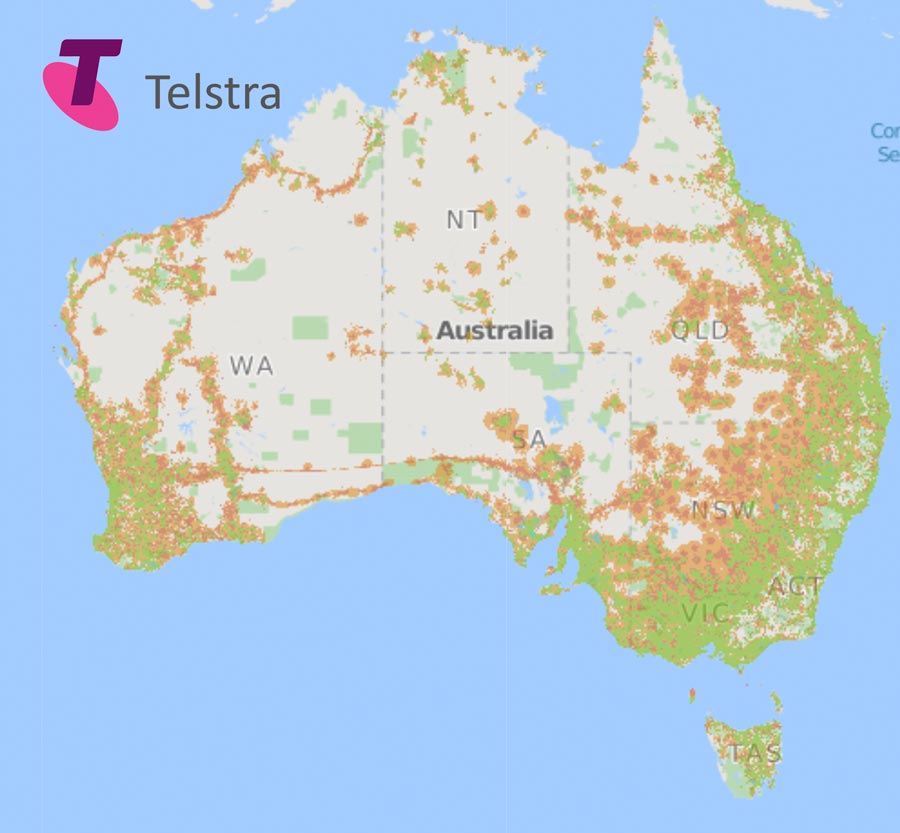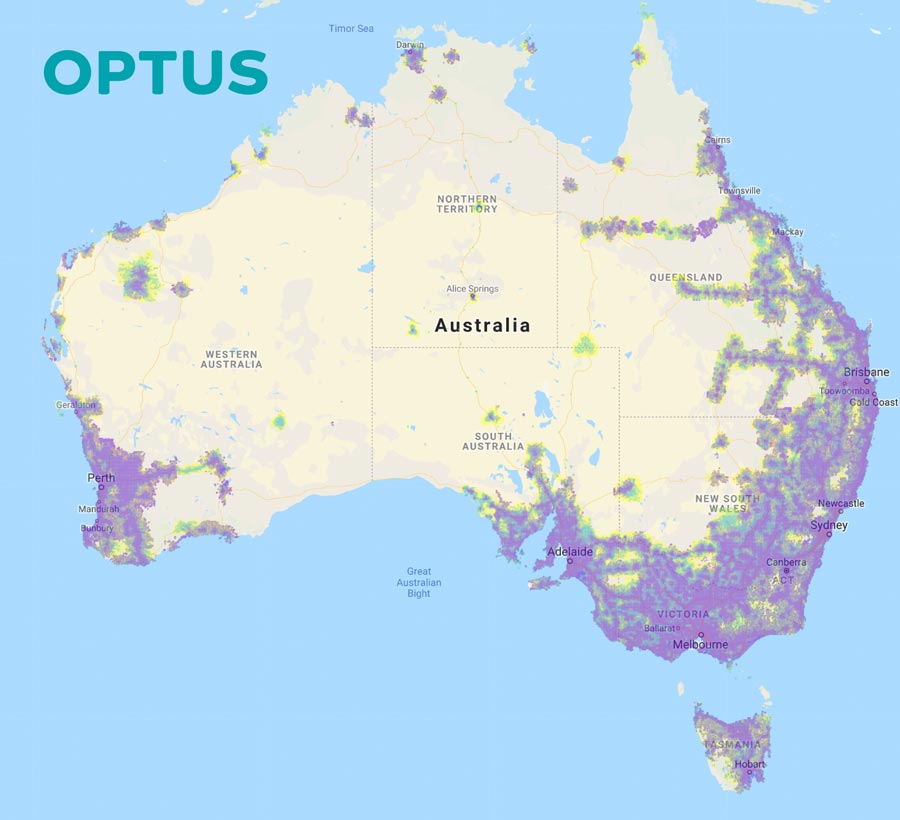Optus vs Telstra Coverage Map: Mobile & NBN Compared
When deciding between Telstra and Optus, one of the most important factors is network coverage. While both are major players in Australia’s mobile and internet markets, the reach and reliability of their networks can differ—especially once you move beyond metropolitan areas. This guide compares Optus vs Telstra coverage maps across 4G, 5G, and NBN services, looking closely at metro performance, regional access, and the pros and cons of each provider's infrastructure. We’ll also show you where to insert an image showing the 5G coverage comparison for maximum visual impact.
Coverage Map Comparison
Before choosing a mobile or internet provider, it’s worth comparing the actual coverage maps side by side. While both Telstra and Optus offer solid national coverage, the differences become clear—especially in regional and remote areas where Telstra maintains a noticeable edge. These maps give you a visual breakdown of 4G and 5G availability across the country.
Telstra Coverage Map

Telstra's coverage map shows the widest reach of any network in Australia, with extensive 4G coverage spanning even the most remote parts of the country. Its 5G network is also growing rapidly, particularly in outer metro areas and regional centres, making it the best choice for users needing consistent connectivity far from the city.
Optus Coverage Map

Optus provides strong coverage in metro and suburban areas, with expanding 5G service in cities and along key travel corridors. While it doesn’t quite match Telstra in remote zones, its network still performs well in most populated areas and offers better value in many metro locations.
Mobile Network Coverage: Telstra vs Optus
Both Telstra and Optus offer extensive mobile coverage across Australia, but the difference in reach becomes more apparent outside capital cities. Telstra maintains the largest mobile network in the country, reaching 99.6% of the population, while Optus isn’t far behind with 98.5% coverage.
In metropolitan areas like Sydney, Melbourne, and Brisbane, you’re unlikely to notice much difference in day-to-day use. Both networks provide strong signal strength and fast 4G speeds, with growing access to 5G services. However, Telstra's advantage becomes clear in regional and remote communities, where its infrastructure includes more towers, broader reach, and more reliable connectivity during emergencies.
Optus still offers solid coverage in major towns and along highway corridors, and it has made significant investments in recent years to expand rural services. It also offers satellite backhaul support, which helps extend coverage to areas where traditional mobile towers are impractical.
Telstra Mobile Coverage
- Covers 99.6% of the Australian population
- Largest regional and remote coverage
- Uses Telstra, Telstra Wholesale, and MVNO networks
- Superior signal penetration in rural areas
- Supports 4G, and growing 5G network
Optus Mobile Coverage
- Covers 98.5% of the population
- Strong metro and suburban performance
- More competitive pricing, but less reach in rural areas
- Expanding 5G rollout in cities and major towns
- Offers satellite backhaul for remote regions
| Feature | Telstra | Optus |
|---|---|---|
| Population Coverage | 99.6% | 98.5% |
| 4G Reach | Excellent (including remote) | Very Good (metro + major regional) |
| 5G Availability | Growing, strongest in capital cities | Competitive, expanding rapidly |
| Regional Coverage | Industry-leading | Moderate |
| Satellite Support | Limited | Yes (via Optus Satellite) |
5G Network Comparison
Australia's 5G rollout is well underway, and both Telstra and Optus are aggressively expanding their next-generation networks. Telstra currently offers 5G in more than 400 towns and cities, with a strong focus on densely populated suburbs and business districts. Optus is also rolling out 5G rapidly, especially in metro areas, and has made notable progress with its Home 5G Internet service, which competes directly with NBN plans.

If you're in a major city, both networks will likely offer 5G access, but Telstra tends to provide broader coverage across city fringes and more consistent speeds during peak periods. Optus may offer better value and promotional pricing, particularly if you’re bundling services like mobile and home internet.
⚡ Telstra 5G
- Available in over 400 towns and cities
- Fastest peak speeds in speed tests
- More towers than any other network (as of 2025)
- 5G coverage included in most Telstra mobile plans
⚡ Optus 5G
- Live in metro areas and selected regional zones
- Offers Home 5G Broadband as an NBN alternative
- Competitive performance in dense urban areas
- May require compatible Optus modem for home broadband
📌 Note:
Actual 5G availability depends on your location, device compatibility, and local tower congestion. Use each provider’s coverage checker to confirm before signing up.
NBN Coverage: Telstra vs Optus
Both Telstra and Optus resell NBN services and offer nationwide coverage—but the experience can vary depending on:
- Your NBN technology type (FTTP, FTTN, HFC, etc.)
- The provider’s network capacity (CVC) in your area
- Peak-hour congestion management
Both Telstra and Optus resell NBN services using the same national infrastructure, so the core coverage area is identical. That said, the performance and customer experience can vary depending on how much bandwidth (CVC) a provider purchases in your area, the quality of the modem they supply, and how they manage network congestion.
Telstra NBN plans are often priced at a premium, but they include extras like 4G mobile backup modems, high peak-hour speeds, and more responsive technical support. Telstra is especially well-optimized for households connected via FTTP and HFC, and their NBN 100 and NBN 250 plans consistently perform well in ACCC speed testing.
Optus NBN plans tend to be more affordable and also come with modems that include 4G fallback. Optus customers also have the added option of 5G Home Internet, which is available in selected areas as an NBN alternative. This can be a great option for renters or those in HFC zones who want fast internet without installation delays.
🏡 Telstra NBN
- Available across all NBN connection types
- Plans cost more but include perks like 4G backup
- Consistently strong peak-hour speeds
- Better technical support and reliability for FTTP and HFC users
🏠 Optus NBN
- Also offers nationwide coverage across all NBN types
- Cheaper base plans, with some limitations on tech support
- Home wireless 5G offered as an NBN alternative
- NBN modem included with 4G fallback in most plans
🔗 Learn more:
Regional & Rural Coverage: Which Is Better?
If you live or travel outside major cities, Telstra remains the go-to choice for reliable coverage. Its mobile network spans more remote highways, towns, and rural communities than any other provider in Australia. In some remote regions, Telstra is the only network available.
This wider reach can make a huge difference for farmers, travelers, and emergency service users. Telstra’s use of low-band spectrum also gives it better signal penetration across long distances and through dense terrain like forests or mountain areas.
Optus offers strong regional coverage near towns, coastal regions, and major roadways, but still falls short in the most remote areas. That said, the Optus satellite network provides some support for outlying communities, and their pricing structure is often more competitive for families on a budget.

Why Telstra Wins:
- Largest number of mobile towers in rural Australia
- Only provider covering some remote areas
- Better emergency service coverage and range
- Stronger signal at longer distances due to low-band spectrum
Optus in Regional Areas:
- Reasonable coverage near towns and highways
- May drop off in remote zones
- Satellite support and local community hubs available
- Strongest in regional QLD and coastal NSW
Home Wireless Broadband Coverage
Both Telstra and Optus now offer home wireless and 5G broadband as NBN alternatives. These plans rely on their respective mobile networks, so coverage matters more than ever.
| Provider | 4G/5G Wireless Broadband | Ideal For |
|---|---|---|
| Telstra | Yes (4G and 5G available) | Rural and metro fallback where NBN is slow |
| Optus | Yes (5G Home Internet) | Metro households looking for an NBN replacement |
💡 Tip:
Before signing up for wireless broadband, check both providers’ coverage maps using your address to avoid black spots.
Final Verdict: Telstra vs Optus Coverage Map
If we’re talking about overall mobile coverage, Telstra still leads thanks to its unmatched rural network, better 4G performance in remote zones, and wider 5G presence across more postcodes. However, Optus delivers better value for metro users and is catching up fast in 5G.
On the NBN side, both providers offer national coverage, with Telstra delivering more premium performance and Optus offering more budget-friendly deals. Your personal experience may vary based on your NBN technology type, so it’s worth checking typical speeds and customer reviews in your area.
| Category | Winner |
|---|---|
| Mobile Coverage (Overall) | Telstra |
| Metro Mobile Performance | Tie |
| Regional & Remote Mobile | Telstra |
| NBN Speed & Reliability | Telstra |
| 5G Home Internet | Optus |
| Value for Money | Optus |
Frequently Asked Questions - Telstra vs Optus Coverage
Which has better mobile coverage: Telstra or Optus?
Telstra has the widest mobile coverage in Australia, reaching 99.6% of the population, especially strong in regional and remote areas. Optus covers around 98.5%, focusing on metro and suburban zones.
How do their 5G networks compare?
Telstra leads with more extensive 5G coverage, including many regional areas, but Optus is rapidly expanding 5G in cities and offers competitive pricing.
What about network performance in cities like Sydney and Melbourne?
In metro areas, both Telstra and Optus offer strong 4G and growing 5G coverage with comparable speeds and reliability.
Which provider is better for rural and remote connectivity?
Telstra is the preferred option for rural and remote coverage due to its larger network footprint and stronger signal penetration.
How do Telstra and Optus compare for NBN services?
Both resell NBN services over the same infrastructure, but Telstra offers premium plans with higher capacity and better congestion management, especially beneficial for high-use households.
Are there benefits to choosing Optus over Telstra?
Optus generally offers more budget-friendly plans and innovative options like 5G home internet, appealing to metro users and those seeking value.
Click below to find a better deal for your home!

